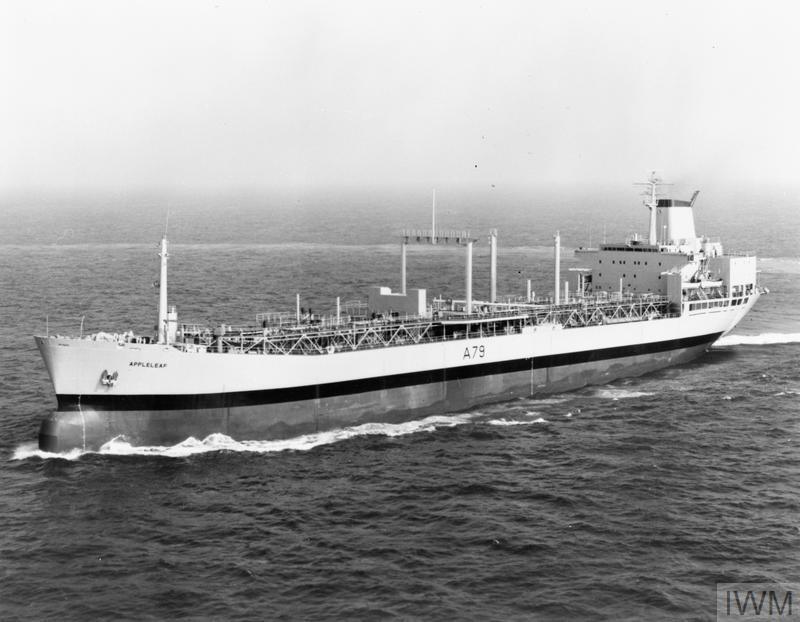Efforts to soften up Argentine defences on the Falklands continued on Sunday 16 May with the bombardment of shore facilities by British warships and air attacks by Sea Harriers.
Frigate HMS Brilliant’s Lynx helicopter had spotted an Argentine supply ship in the Fox Bay East area of West Falkland on the night of Saturday May 15 but could not carry out an effective attack.
The mantle was taken up by a pair of Sea Harriers from 800 Naval Air Squadron on 16 May when they checked the jetty at Fox Bay East and found the ship – the 5,000-ton fleet transport vessel ARA Bahia Buen Suceso – still alongside.
The aircraft strafed the ship with cannon, as it was too close to civilian homes to use bombs, causing damage to the bridge and engine room; she did not sail again during the Falklands Conflict.
Earlier in the day another pair of Sea Harriers caught the Argentine cargo ship Rio Carcarana heading for Port King, off Falkland Sound, and attacked her with cannon fire and bombs.
The 8,500-ton ship quickly caught fire and was abandoned as she carried a cargo of munitions and other war materiel.
The fires burnt themselves out over the course of the next three days and the hulk was towed into Fox Bay for inspection by the Argentinians, where she was found to be beyond repair or further use.
Left at anchor, the ship was sunk on 24 May by Sea Skua missiles from frigate HMS Antelope’s Lynx helicopter.
A number of southbound ship groups started to rendezvous over the next few days, including the Antrim Group, the Fearless Group and the Argonaut Group.
Fleet tanker RFA Plumleaf was detached from her group and joined three other Leafs – Appleleaf, Bayleaf and Pearleaf – as part of the ‘motorway chain’ acting as service stations for ships engaged in Operation Corporate (the campaign to retake the Falklands) between the UK and the South Atlantic.
Offshore support vessel/mooring ship Wimpey Seahorse, taken up from trade, was on her way douth following preparation work in Rosyth and Portsmouth including the fitting of replenishment at sea gear and communications equipment.
The ship went on to lay moorings in South Georgia, and in the Falklands after the Argentine surrender.
Tug Salvagemen arrived in the TRALA – Tug, Repair and Logistic Area – and was later joined by repair ship Stena Seaspread.
Tanker RFA Tidespring sailed from Ascension on 16 May with two replacement Wessex helicopters, heading for the Total Exclusion Zone (TEZ) around the Falklands, escorted by frigate HMS Antelope.
Another hard-working fast Fleet tanker, RFA Olmeda, managed to RAS with eight ships on 16 May.
After a break in operations because of the need for tankers to refuel Nimrod patrol aircraft which were hunting submarines in the South Atlantic, two RAF Vulcan bombers were readied for Black Buck 3, a third long-range bombing raid on the Falklands from Ascension Island which was due to begin on 16 May.
However, strong headwinds led to the cancellation of the raid, and the Vulcans returned to the UK over the following week.
Today’s image from the Imperial War Museum collection (© IWM MH 27584) shows Fleet oiler RFA Appleleaf, one of the four Leaf-class ships that acted as a motorway service station chain for ships sailing between the UK and the South Atlantic on Operation Corporate.
* These posts can only give a brief sense of what was a complex and fast-moving situation 40 years ago, and cannot cover the involvement of every ship, squadron and unit in detail – for a much more comprehensive account see the Falklands section of naval-history.net at https://www.naval-history.net/NAVAL1982FALKLANDS.htm
